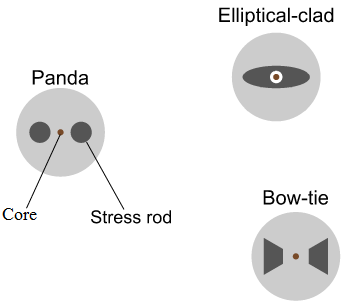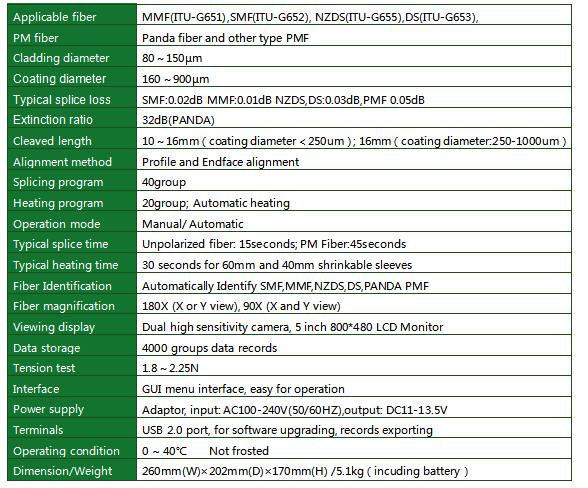Categories
Latest Blog
What is a POLARIZATION MAINTAINING (PM) Fiber Fusion Splicer used for?
Before we know more about PM fiber fusion splicer, we should learn more about what is PM fiber.
WHAT IS POLARIZATION MAINTAINING FIBER?
Polarization maintaining fiber (PM Fiber) is a special type of single mode fiber. Normal single mode fibers are capable of carrying randomly polarized light. However, PM fiber is designed to propagate only one polarization of the input light.
In polarization maintaining fiber, the polarization of linearly-polarized light waves launched into the fiber is maintained during propagation, with little or no cross-coupling of optical power between the polarization modes. This polarization maintaining feature is extremely important for some fiber optic components such as external modulators that require a polarized light input.
This characteristic is achieved during the manufacturing process by inducing stresses in the material itself. There are two categories of polarization maintaining fiber (PMF) available, linear polarization maintaining fiber (LPMF) and circular polarization maintaining fiber (CPMF).
CROSS SECTION OF POLARIZATION MAINTAINING FIBERS

The above picture shows the cross-section of three types of polarization maintaining fibers (PM fibers). These fibers contain a feature not seen in other fiber types. Besides the fiber core, there are stress rods in the fibers. The stress rods are two circles in the Panda PM fiber, a elliptical clad in elliptical-clad PM fiber and two bow-ties in the Bow-Tie type PM fiber.
As their name implies, these stress rods create stress in the core of the fiber such that the transmission of only one polarization plane of light is favored.
When PM fibers are terminated with fiber connectors, it is very important that the stress rods line up with the connector, usually in line with the connector key.
PM fiber also requires a great deal of care when it is spliced. Not only the X,Y and Z alignment have to be perfect when the fiber is melted together, the rotational alignment must also be perfect so that the stress rods align exactly.
Another requirement is that the launch conditions at the optical fiber end face must be consistent with the direction of the transverse major axis of the fiber cross section.
APPLICATIONS OF POLARIZATION MAINTAINING FIBERS
1. PM optical fibers are used in special applications, such as fiber optic sensing, interferometry and slab dielectric waveguides
2. PM fibers are expected to be used in coherent optical transmission systems or long distance bidirectional optical transmission systems
3. They may also be used in transmission applications where the polarization plane of the optical signal is important, such as transmission lines for optical sensors and coupling for optical electrical integrated circuits
4. PM fibers are used in lithium niobate modulators, Raman amplifiers, and other polarization sensitive systems to maintain the polarization of the incoming light and keep cross-coupling between polarization modes at a minimum.
How to splice the PM fiber?
What you need is a PM fiber fusion splicer. Currently the famous PM fiber splicers in the market is Fujikura 100M, FITEL S183PM, Ceyear 6474, SHINHO S-12PM etc. Below is some details of SHINHO S-12PM fiber fusion splicer.
FEATURES of SHINHO S-12PM Fiber Fusion Splicer
* Core to core alignment, low splicing loss
* Endview and Profile observation and alignment
* Arc automatic calibration and splicing
* PM fiber 45 and 90 degree alignment
* Applicable to variety fibers splicing, such as Panda ,bow-tie and elliptical fiber .

SPECIFICATIONS

PACKAGE

For details, welcome visit www.xhfiber.com or contact sales@xhfiber.com.
© Copyright: SHINHO OPTICS LIMITED All Rights Reserved.